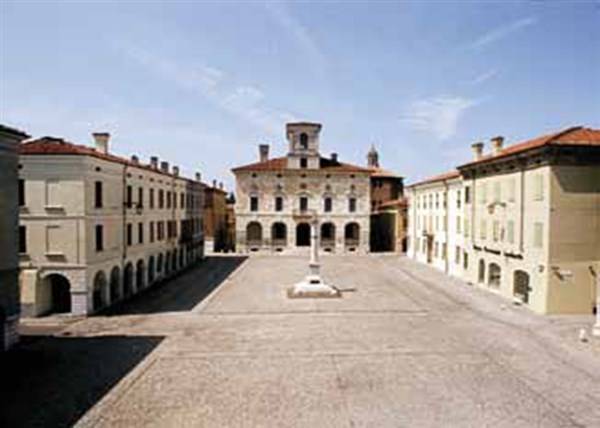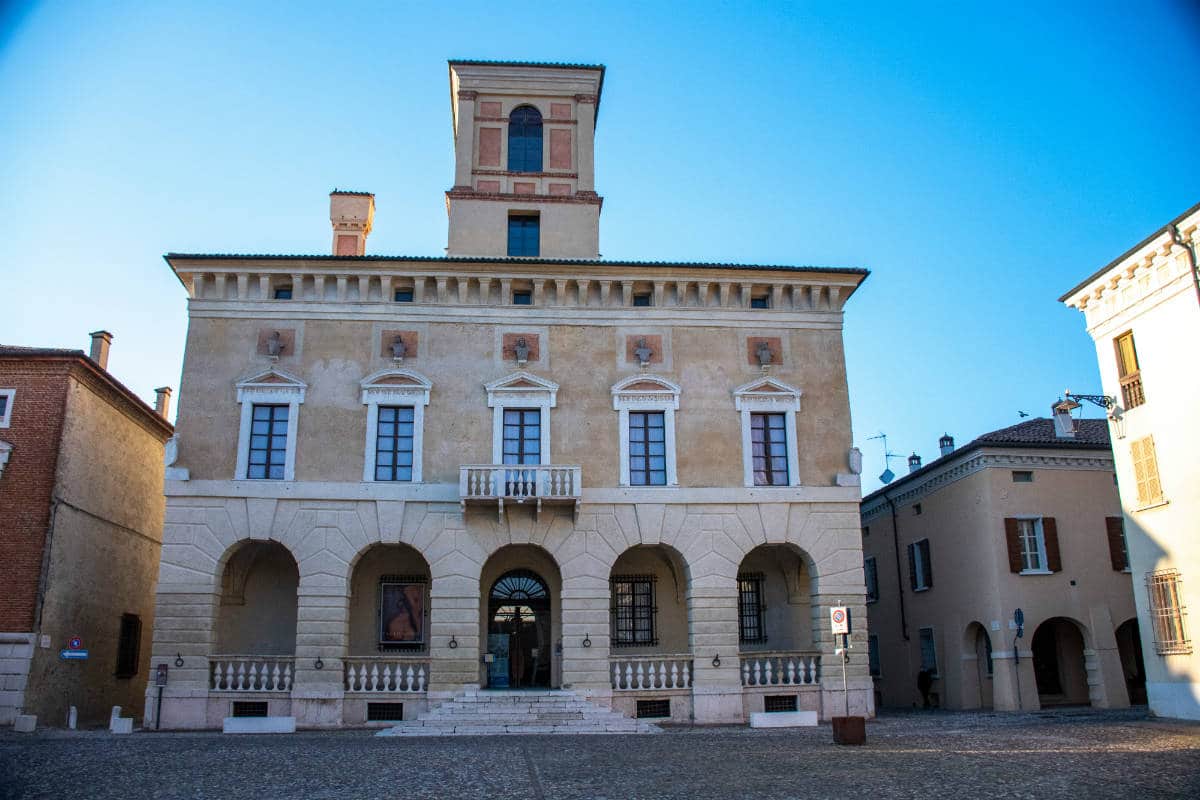The Ducal Palace, or Grand Palace, is a historical building on two floors with a portico and a central turret, that overlooks piazza Ducale in Sabbioneta. In the second room on the second floor there is the genealogical tree of the Gonzaga family in which each member is flanked by his wife and by her husband. In this palace died duke Vespasiano Gonzaga.
It was the first significant building made from Vespasiano Gonzaga (1531-1591) (son of Rodomonte and Isabella Column, polite to funds from the famous aunt Giulia Gonzaga) in its ideal city, the capital of the homonymous staterello: it was the residence of the royal family and the fulcrum of political organization, administrative and courtesan of the duchy. The ground floor is preceded by a beautiful portico covered with marble. The piano nobile is enhanced by the so-called salt of gold, with the time of gilded wood and painted: at the center of the ceiling of the room of the projectile will note the coat of arms of the duke surrounded by the collar of the Golden Fleece, conferred upon him by King Philip II of Spain; the original was found in his sarcophagus in the nearby church of the Blessed Virgin Mary crowned.
Are interesting: the sala del Duca d’Alba, with a majestic fireplace in pink marble; the hall of the eagles with the equestrian statues of wooden (Once upon a time there were ten) portraying Vespasian, the Father Luigi Gonzaga “Rodomonte”, the great grandfather Gianfrancesco and Ludovico; the Gallery of Ancestors, decorated with grotesques, wherein they are aligned many effigies of the Gonzaga family up to the same Duke, his second wife Anna d’Aragona and the only Son, who died prematurely Luigi Gonzaga (1566-1580); the room of the elephants; the Sala dei Leoni, with the blazon ducale ruled by two heraldic felines: the room of the city and of the angel, with ceiling in cedar; the Sala degli octagons and bunches, that accommodated the rich library of Vespasian. The authors of the frescoes were, among others, Bernardino Campi and Alberto Cavalli.
The death of Duke (26 February 1591) the palace, the remaining real estate and the staterello were inherited by his daughter Isabella Gonzaga (1565-1637), wife of Luigi Carafa della Stadera.



